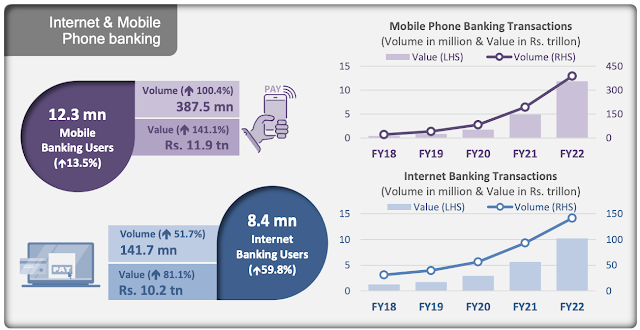Incomes of Pakistan's Poorest Rising Faster Than Richest Pakistanis'
Pakistan Living Standards Measurement Survey (PSLM/HIES) of 2018-19 has revealed that the incomes of the poorest Pakistanis are rising much faster than the those of their richest counterparts. The survey measures changes in incomes, expenditures and living standards of the population by quintiles on a periodic basis. The survey provides detailed outcome indicators on education, health, population welfare, housing, water sanitation and hygiene, information communication and technology (ICT), food insecurity experience scale (FIES) and income and expenditure.
PSLM/HIES 2018-19 compares incomes with those reported in PSLM/HIES 2015-16. It shows that the average household monthly income in Pakistan has jumped 16.5% to Rs. 41,545. It also shows that the average monthly income of the lowest quintile (Q1) in Pakistan rose 17.5% and that of the second lowest quintile (Q2) grew 22%, significantly faster than 11.7% for the middle quintile (Q3) and 12% and 5.1% for the top two quintiles (Q4 and Q5) respectively.
The average monthly income of Q1, the poorest quintile, stands at Rs. 23,192 in 2018-19. The second-lowest quintile’s income is Rs. 29,049. The middle-income group (Q3) is Rs. 31,373. The higher middle-income group’s average monthly income has increased to Rs. 37,643. The average monthly income of the top income group (Q4) is estimated at Rs. 63,544.
Average monthly household income in Balochistan is Rs. 36,387, the lowest among the provinces. However, it has grown 21.2% since 2015-16, much faster than Punjab's 18.3%, KP's 11.4% and Sindh's 15.1%.
Pakistan's latest PSLM/HIES survey confirms long term trend of the lower quintiles gaining an increasing share of the national income. Earlier in 2015, the United Nations Economic and Social Commission for Asia and Pacific (NESCAP) Statistical Yearbook for 2015 showed that the share of national income of Pakistan's poorest 20% of households increased from 8.1% to 9.6% in 1990-2015. It was the highest share of income for the bottom income quintile reported in the region.
 |
| Average Monthly Income Growth By Quintiles. Courtesy: Bilal Gilani of Gallup Pakistan |
PSLM/HIES 2018-19 compares incomes with those reported in PSLM/HIES 2015-16. It shows that the average household monthly income in Pakistan has jumped 16.5% to Rs. 41,545. It also shows that the average monthly income of the lowest quintile (Q1) in Pakistan rose 17.5% and that of the second lowest quintile (Q2) grew 22%, significantly faster than 11.7% for the middle quintile (Q3) and 12% and 5.1% for the top two quintiles (Q4 and Q5) respectively.
The average monthly income of Q1, the poorest quintile, stands at Rs. 23,192 in 2018-19. The second-lowest quintile’s income is Rs. 29,049. The middle-income group (Q3) is Rs. 31,373. The higher middle-income group’s average monthly income has increased to Rs. 37,643. The average monthly income of the top income group (Q4) is estimated at Rs. 63,544.
 |
| Monthly Household Incomes By Provinces. Source: PLSM/HIES 2018-19 |
Average monthly household income in Balochistan is Rs. 36,387, the lowest among the provinces. However, it has grown 21.2% since 2015-16, much faster than Punjab's 18.3%, KP's 11.4% and Sindh's 15.1%.
 |
| Change in Share of Income From 1990 To 2015 in Poorest (Left) & Richest (Right) Quintiles. Source: UNESCAP |
Pakistan's latest PSLM/HIES survey confirms long term trend of the lower quintiles gaining an increasing share of the national income. Earlier in 2015, the United Nations Economic and Social Commission for Asia and Pacific (NESCAP) Statistical Yearbook for 2015 showed that the share of national income of Pakistan's poorest 20% of households increased from 8.1% to 9.6% in 1990-2015. It was the highest share of income for the bottom income quintile reported in the region.
Related Links:
Haq's Musings
South Asia Investor Review
Pakistan's Social Sector
Major Tipping Point: Pakistan's Middle Class Grows to 55%
Pakistan's Expected Demographic Dividend
Can Imran Khan Lead Pakistan to the Next Level?
Democracy vs Dictatorship in Pakistan
Pakistan Child Health Indicators
Pakistan's Balance of Payments Crisis
Panama Leaks in Pakistan
Conspiracy Theories About Pakistan Elections"
PTI Triumphs Over Corrupt Dynastic Political Parties
Strikingly Similar Narratives of Donald Trump and Nawaz Sharif
Nawaz Sharif's Report Card
Riaz Haq's Youtube Channel
South Asia Investor Review
Pakistan's Social Sector
Major Tipping Point: Pakistan's Middle Class Grows to 55%
Pakistan's Expected Demographic Dividend
Can Imran Khan Lead Pakistan to the Next Level?
Democracy vs Dictatorship in Pakistan
Pakistan Child Health Indicators
Pakistan's Balance of Payments Crisis
Panama Leaks in Pakistan
Conspiracy Theories About Pakistan Elections"
PTI Triumphs Over Corrupt Dynastic Political Parties
Strikingly Similar Narratives of Donald Trump and Nawaz Sharif
Nawaz Sharif's Report Card
Riaz Haq's Youtube Channel



Comments